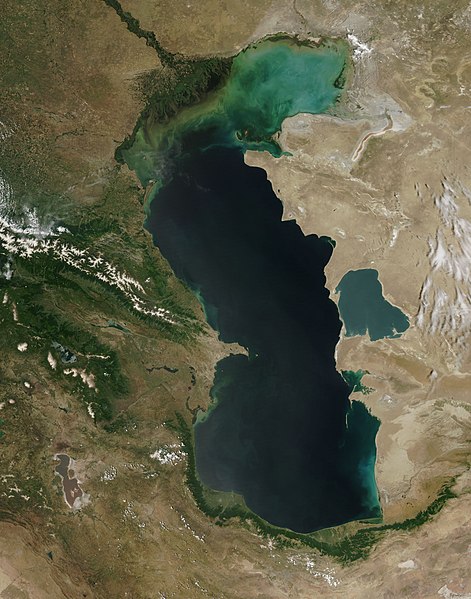Datei:Caspian Sea from orbit.jpg

Größe dieser Vorschau: 471 × 599 Pixel. Weitere Auflösungen: 188 × 240 Pixel | 377 × 480 Pixel | 603 × 768 Pixel | 804 × 1.024 Pixel | 1.609 × 2.048 Pixel | 4.400 × 5.600 Pixel.
Originaldatei (4.400 × 5.600 Pixel, Dateigröße: 3,44 MB, MIME-Typ: image/jpeg)
Dateiversionen
Klicke auf einen Zeitpunkt, um diese Version zu laden.
| Version vom | Vorschaubild | Maße | Benutzer | Kommentar | |
|---|---|---|---|---|---|
| aktuell | 10:16, 14. Jun. 2010 |  | 4.400 × 5.600 (3,44 MB) | Originalwana | higher res |
| 16:10, 8. Feb. 2005 |  | 550 × 700 (67 KB) | Pixeltoo | Caspian sea by space Nasa |
Dateiverwendung
Keine Seiten verwenden diese Datei.
Globale Dateiverwendung
Die nachfolgenden anderen Wikis verwenden diese Datei:
- Verwendung auf af.wikipedia.org
- Verwendung auf als.wikipedia.org
- Verwendung auf am.wikipedia.org
- Verwendung auf ang.wikipedia.org
- Verwendung auf an.wikipedia.org
- Verwendung auf arc.wikipedia.org
- Verwendung auf ar.wikipedia.org
- بحر قزوين
- ويكيبيديا:صور مختارة/الفضاء والكون/نظرة إلى الخلف
- ويكيبيديا:ترشيحات الصور المختارة/بحر قزوين
- ويكيبيديا:صورة اليوم المختارة/ديسمبر 2016
- قالب:صورة اليوم المختارة/2016-12-23
- مستخدم:قائمة أكبر البحيرات والبحار في المجموعة الشمسية
- ويكيبيديا:صورة اليوم المختارة/يوليو 2020
- قالب:صورة اليوم المختارة/2020-07-16
- ويكيبيديا:صورة اليوم المختارة/يوليو 2023
- قالب:صورة اليوم المختارة/2023-07-26
- Verwendung auf arz.wikipedia.org
- Verwendung auf ast.wikipedia.org
- Verwendung auf as.wikipedia.org
- Verwendung auf av.wikipedia.org
- Verwendung auf azb.wikipedia.org
- Verwendung auf az.wikipedia.org
- Verwendung auf bat-smg.wikipedia.org
- Verwendung auf be.wikipedia.org
- Verwendung auf bew.wikipedia.org
- Verwendung auf bg.wikipedia.org
- Verwendung auf bh.wikipedia.org
- Verwendung auf bn.wikipedia.org
- Verwendung auf br.wikipedia.org
- Verwendung auf bs.wikipedia.org
- Verwendung auf bxr.wikipedia.org
- Verwendung auf ca.wikipedia.org
- Verwendung auf ce.wikipedia.org
- Verwendung auf ckb.wikipedia.org
- Verwendung auf co.wikipedia.org
- Verwendung auf cs.wikipedia.org
Weitere globale Verwendungen dieser Datei anschauen.


